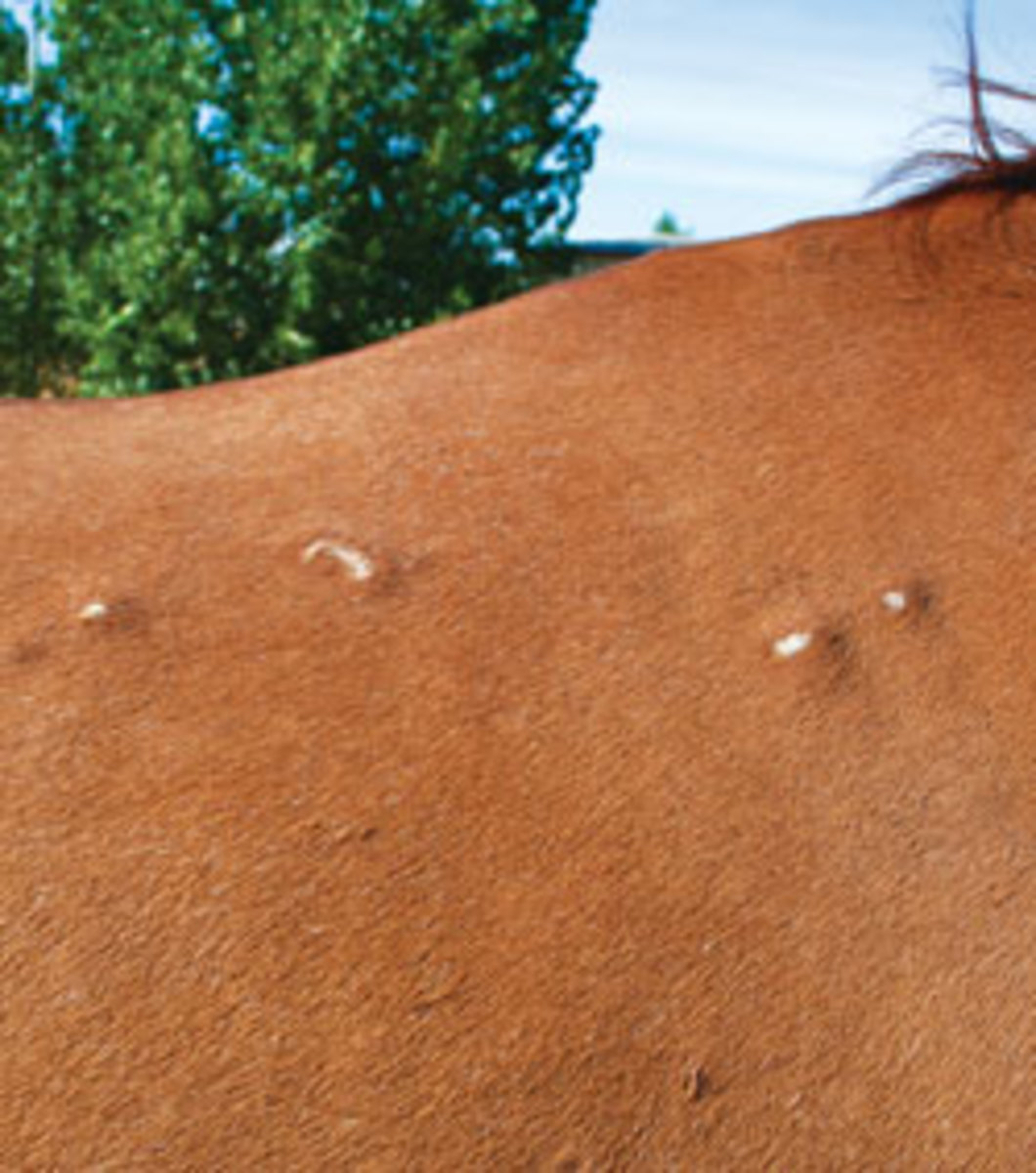
Horses, like people and other animals, have a variety of skin problems. The common one I would like to address in this issue goes by a couple of fancy names in veterinary literature, nodular necrobiosis or eosinophilic granuloma.
These lesions are typically seen on the “trunk” area of the horse, which includes the neck, back or sides. They are firm, non-painful and do not change in size. They involve the deep layers of the skin, and upon examination feel like someone implanted a jelly bean or large peanut.
The distribution is not usually symmetrical on each side of the horse. This distribution pattern and their chronic nature differentiate this lesion from hives or an acute allergic reaction. Occasionally, one of these lesions may lose the overlying hair and ulcerate.
The lesions get their name from their appearance on microscopic examination. They are made up basically of scar tissue (granuloma) that is infiltrated with a specific type of white blood cell (Eosinophil). The presence of this particular cell suggests the cause of the problem. This cell is commonly associated with response to a foreign protein such as a parasite or insect bite. Since no parasite has ever been demonstrated in one of these lesions, it’s assumed they are a type of immune response to insect bites.
People sometimes feel these lesions are the result of irritation from the saddle or cinch, but the fact that some lesions are outside those areas and the histopathology (microscopic evaluation) suggest a different etiology.
Treatment of this condition can be problematical. First of all, there is no simple treatment that is universally successful. Secondly, the presence of the lesions does not usually impact the horse’s function. Injection into or around each lesion with a corticosteroid (cortisone) type drug can be helpful.
However, some of these lesions are so dense (can even become mineralized) that surgical excision is the only option to get rid of them. How to handle a case of this problem should be decided, with your veterinarian’s consultation, based on necessity of treatment and which modality is best suited.










